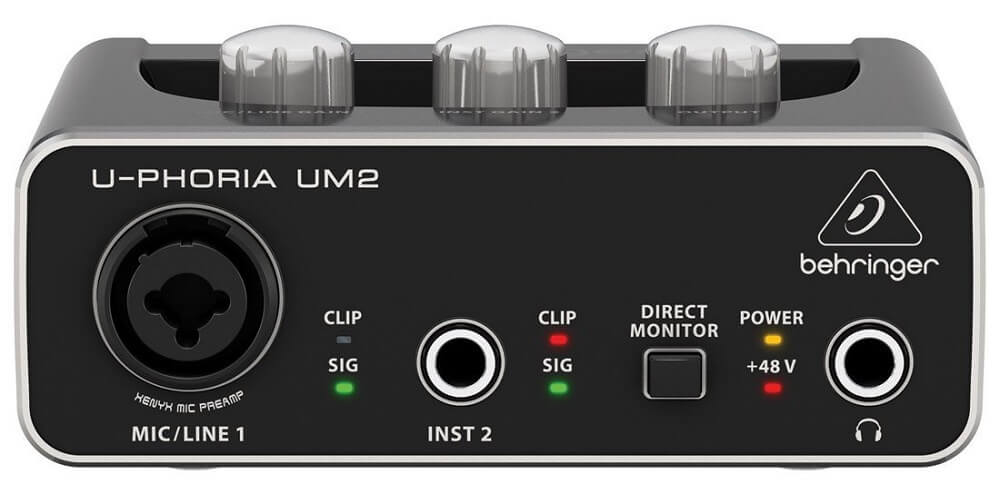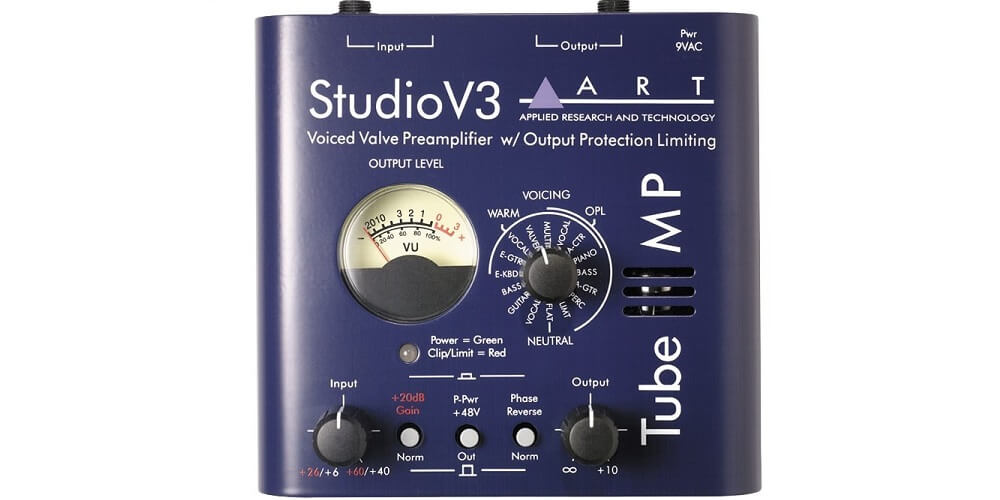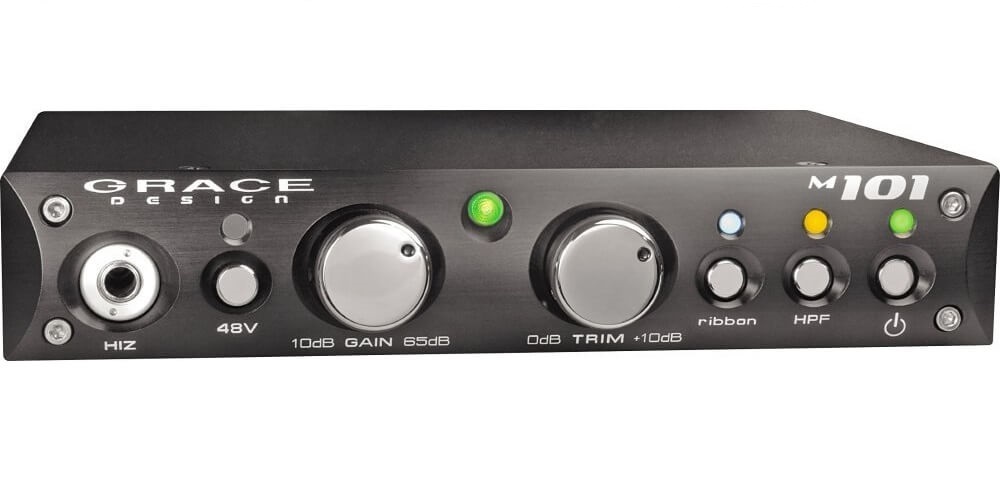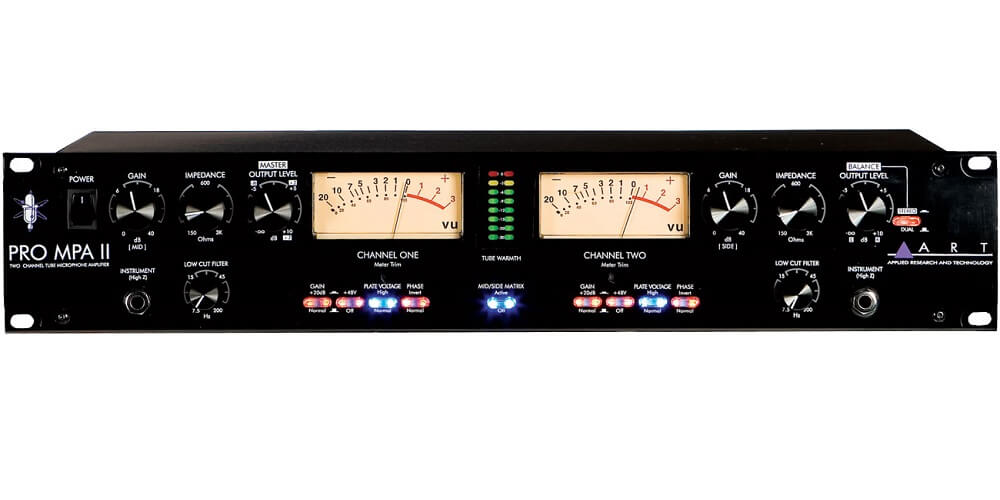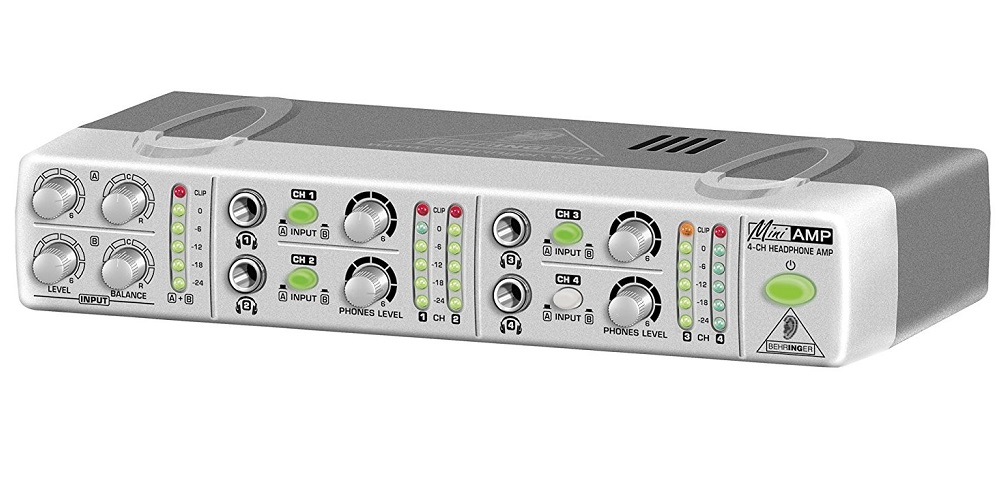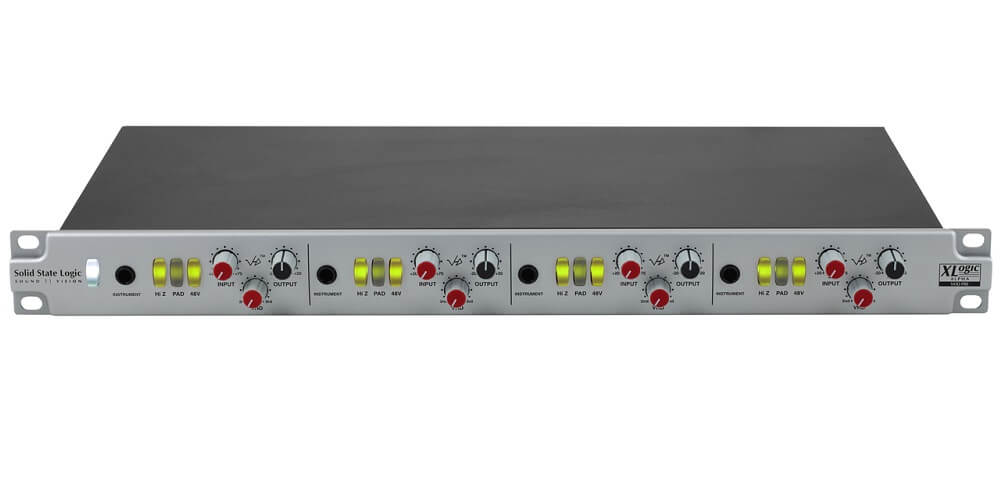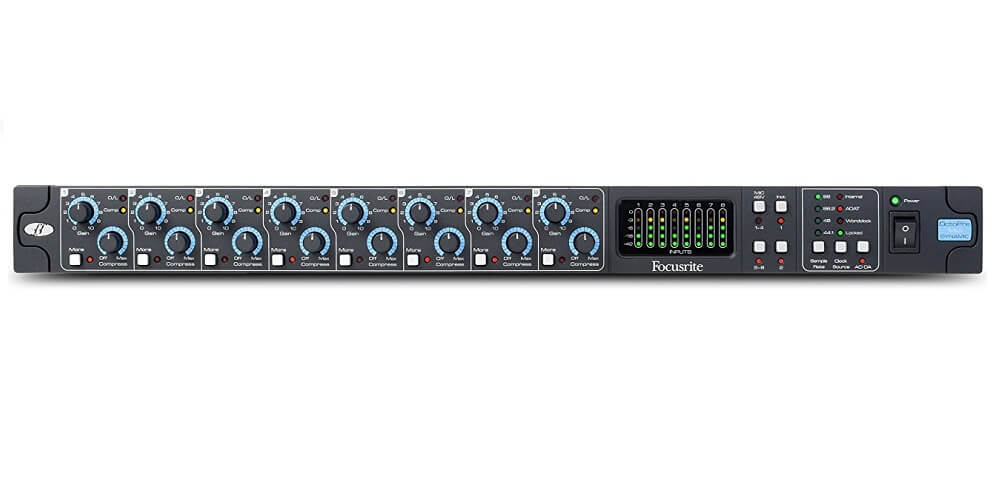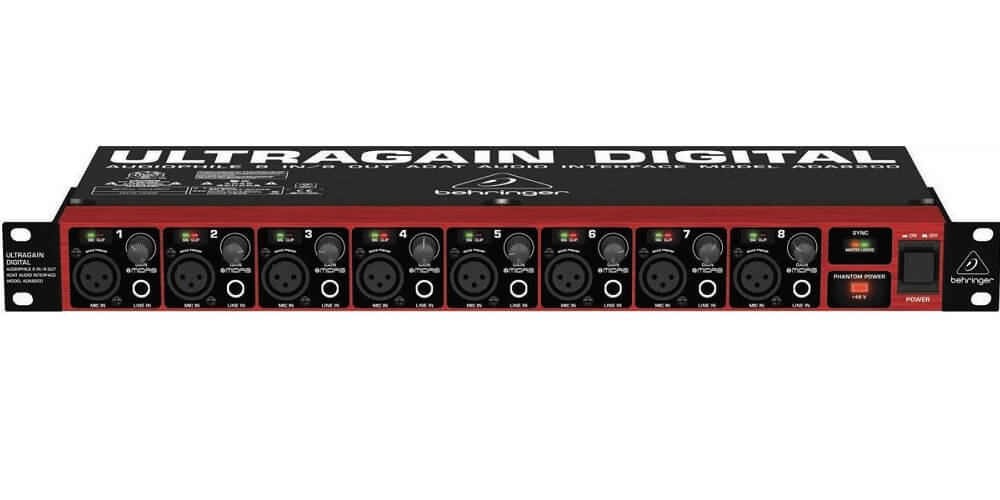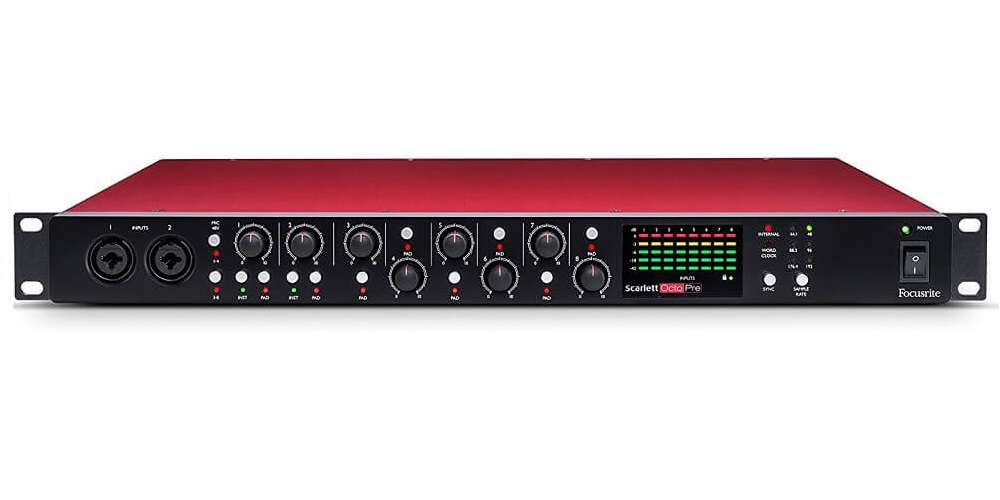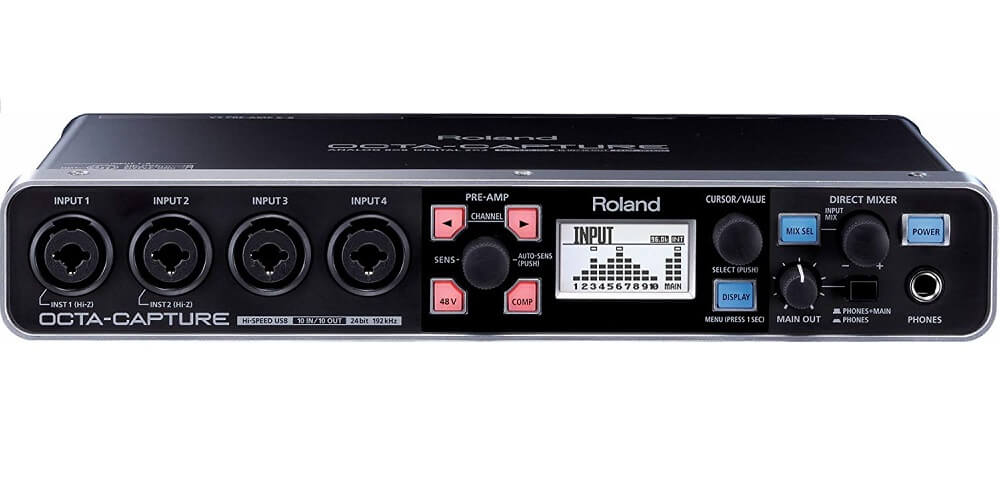Why Bothering with Preamps for Mics?
Picking the most fitting model among the mic preamps I consider my current and future aims. I might not need more than one channel currently, but when other instruments or voices join, having the 8-channel best mic preamp would be of great help. Besides, for having a singing party overnight I could use a cheaper model while setting a home studio for recording music requires more solid future-proof devices. They cost more; yet, it can turn a better bang for the buck upon 10 years of the constant usage. Anyway, check out further mic preamp reviews to find the best for you.
Reviews for the Stunning Mic Preamps
Single-Channel Preamps for Solo Singers
DBX 286S — the Fanciest Mic Preamp under 500
This sturdy-looking mic amp allows tweaking almost every sound parameter. It deals with room’s acoustic flaws perfectly. I could eliminate the echo completely by controlling the compressor and equalizer. The control knobs are highly sensitive, so, it took time getting used to them. Still, I appreciated the new effects I got. I added more warmth or got steel-sharp by dialing the compressor settings, and completely silenced the outer noises through the gate usage. I aimed for a natural sound without coloration, so, I tweaked the gain and frequency as well. I enjoyed the attenuation, too. Getting rid of the breathing effect by means of the expander balancing and eliminating the accent on esses have provided a perfect clear sound matching the professional records. I also tried my audio chain including the preamp for an outdoors event and was pleased with the sound dispersion and the clarity of the signal.
Pros
- Perfect real-time processing for streaming.
- A good gain range fitting most condenser and dynamic microphones.
- The EQ is comprehensive and easily set out.
Cons
- No direct conversion to PC.
- The device is rather large and heavy.
The Budget Mic Preamp for Beginners — Focusrite Scarlett Solo (2nd Gen)
It is the best vocal mic preamp for the first steps in the sound recording or podcasting. The setup is simple and quick, though mandatory for a good sound output. I tweaked the compression and the gain output and got quite a nice sound from my Rockville Pro microphone (a condenser type). The USB connection is very handy, the Windows 10 laptop immediately recognized the preamp and installed the drivers. To get a full functionality, I had to undergo the Pro Tools updating. Upon that, I got a really crisp sound, with almost no preamp-inspired coloring. I had no problems streaming directly for YouTube and playing the variations in Reason 10. I would say, the 9V batteries do not fit the long broadcasting or recording. Still, it’s quite handy not to depend on power outlets and using the system outdoors. Considering the price, this unit is the best budget preamp for the occasional use, with plenty of options and especially nice flat sound.
Pros
- Additional outputs for headphones.
- I enjoyed the LED-lit volume control.
- The rubber feet ensure solid standing.
Cons
- I couldn’t adjust the pan to reassign the channels.
- No Apple / Mac support.
The Superb Mic Preamp for Vocals — ART Voice Channel
This high-end tube mic preamp is fully packed with all the must-have enhancements like the Gate, compressor, de-esser, etc. I used the default settings for the educational master class streaming, and it worked out the ambiance and the voice perfectly. The side sounds like computer AC buzzing and the running water were simply cut out, while the voice came out rich and warm, perfectly distinct. The Gate default setting did a great job. I heard no irritating breath or gulp sounds when going through the recording afterward. The setting options are versatile; getting a different sound would require a lot of tweaking and playing with controls. This best preamp for vocals has a great gain allowing using it with both the condenser and dynamic microphones. I really appreciated its compatibility with Windows 10. The driver installed quickly, all the software I usually apply (FL Studio and Logic Pro) worked just fine.
Pros
- I changed the impedance control to get the improved tonal coloring.
- The comprehensive equalizer settings easy to tweak.
- Both analog and digital outputs – syncing with any equipment.
Cons
- Getting the full functionality set up requires a pro level or a technical mind.
- A tiny delay in computer live playback.
BEHRINGER U-PHORIA UM2 — the Average Good Mic Preamp under 500
This inexpensive audio interface does not amaze with the variety of options; yet, provides quite a decent sound. It is not super clean, featuring some hissing that can be decreased by playing with the frequency level. I managed to make it almost unnoticeable with the condenser MXL 990. Still, connecting the dynamic Shure SM57 was a mistake – the hissing became much more irritating and the gain was clearly not enough providing an additional interference buzzing. I liked the plug-and-play connection with my Mac, no issues there. The latency is not perfect but quite acceptable considering the price level of the device. There is a free software provided with the preamp that includes Audacity prog, which sets the unit well. I tried the guitar recording and was pleased with the middle string clear performance.
Pros
- Good headphones connection and sound.
- 48V Phantom compatible.
- The preamp weighs a bit more than a smartphone and fits even a laptop bag.
Cons
- A plastic built is not future proof.
- Front location of the inputs reduces the operational place.
Golden Age Project Pre73 JR — a Classic Recording Preamp
In spite of the small size, this preamp has great gain options, usable throughout the whole range. I tried setting it up to 70 and had no interference at all (while the sound got a bit thick). My acoustic guitar sounded perfect in all the lines, the low string being rich and the high ones fully present. This is certainly one of the best mic preamps for vocals producing the voice sound in a full analog, warm and natural. There is no digital metal-like effect, while the coloration can be easily adjusted. Setting the unit up might take some time, especially when putting the gain at extreme positions (the compressor settings need a special attention, and it is great the knobs are responsive). The unit features separate XLR and TRS outputs, so each channel is worked out independently and traced clearly. I liked the insert jack for connecting my external EQ, which got along perfectly and without a lip sync.
Pros
- The variable impedance allows using different microphones.
- A combo input jack ensures compatibility with any equipment.
- Nice vintage design.
Cons
- The knobs seem a bit feeble.
- No modern enhancements like de-esser, expander, etc.
The Handiest Portable Pre Amp for Microphone IK Multimedia iRig
This unit takes less room than an iPod and can be connected to different types of mics. I used it to record the nature sounds. It does give a slight cracking when the gain is set high. However, fiddling with the frequency, I got a good record of the birdsongs with the separate sounds well distinguishable. The preamp is not a device to be used in a home studio as its output level is quite low – it provides almost no signal for the stationary speakers. Yet, listening through an iPad gave a decent sound with the effects enabled. The headphones connection is also fine, the sound is clear and distinct. I tried the YouTube streaming, BeatWave, and Facebook calls with this preamp, too. The sound was nice, the voice is clear and the average noise level at the output was less than the actual one. In short, this preamp is good for recording, unless a professional studio-like sound is aimed for.
Pros
- I enjoyed the easily adjusted loudness controls.
- Fast smart setup.
- Straps on the unit allow attaching it to the tablet or another surface.
Cons
- The non-marked wheel control for gain isn’t handy.
- The headphone connection requires a TRRS cable.
A Perfect Low-End Preamp for Home Studio — ART TubeMPSTV3
This inexpensive mic preamp has the tonal control, which does not provide a great range; still, it can add a warmth or, otherwise, bring a metal effect into the sound. Thanks to the different input and output jacks, I could connect my EQ and headphones and create an outstanding sound pattern for my audio set. The setup is not much to do with, though using different mic types does require fiddling with the frequency / gain / output. I got a really nice clean instrumental sound while recording via dynamic Shure SM58, but using the condenser Audio Technica required tweaking the settings a bit. I enjoyed the rich bass, while the high-pitch guitar sound seemed a bit inexpressive. The design is smart, especially the handy front labeling. I had no problem distinguishing the needed ports and connecting the cables.
Pros
- I marveled the Audacity setup silencing the noise.
- Output Protection Limiter ensures the safety of the connected equipment.
- The metal casing provides for the durability.
Cons
- The device has no power switch.
- The VU meter sometimes gets stuck.
The Best One-Channel Mic Preamp under 1000 — Grace Design m101
The vast gain range of this high-end professional studio preamp ensures the perfect sound from condenser, ribbon and dynamic mics. I had the AKG Cardioid to test against the Sennheiser dynamic and can say that the sound is gorgeous but different. With Sennheiser, the low vocals were extremely potent and rich. Meanwhile, with the condenser AKG, the mid-channel sound had been sharp clear, each voice effect had been super-distinguishable. I tried some live broadcasting and was amazed by the absence of halo effect during the voice transmission. The latency had been perfect, an instantaneous response. The loudness can be set up to any level, the main line and the side ones still being distinguishable and transparent. The preamp is compatible with Windows and Mac. There is no need to tickle the settings while connecting the devices, the audio is great without the slightest noise or humming. Moreover, it is definitely the best mic preamp for vocals in terms of sound control.
Pros
- Leveled gain meter for perfect control over the sound.
- A vast headroom range benefits the drums’ performance.
- No coloring – a transparent sound “as it is”.
Cons
- The preamp is rather large – does not fit the small space.
- The 6V external adaptor is a bit limiting for a high-level device.
2-Channel Preamps: Diversifying the Activities
Variability for High-Class Sound — ART ProMPAII
This device is noticeable for its versatile options. I could control the impedance that provides the wide array of the sound or its concentration in one powerful surge. The voltage changing controls the sound coloration and transforms the signal from the juicy and warm to the steel-crisp audio. This is a tube preamp that can produce the really powerful super-clean sound, at the expense of the tube exhaustion. The tubes can be easily replaced, however. I tried this device for the duet voice recording with the acoustic guitar accompaniment. It required some time before fixing all the parameters in a proper way, but the effect was worth it. Each line was heard distinctly, the high-pitch tones did not get the ultra-piercing tint, as it is wont in the digital sound processing. I enjoyed fiddling with settings, as the meter works precisely and the controls are intuitive.
Pros
- Can produce the enveloping 3D-sound effect.
- Compatible with the music creation apps.
- Solid built of the device and control knobs.
Cons
- The ribbon miс performance is not that impressive.
- The XLR inputs are placed on the rear, twitching the microphone cables.
4-Channel Preamp: Expanding the Audio
Behringer AMP800 — the Best Microphone Pre Amp for Headphones
This device takes its own niche in the market for preamps for mics – the headphones usage. It has four independent amplifying channels and two separate stereo inputs for each channel. Thus, two persons can share the audio or use the preamp independently via different channels. Besides, it allows changing the balance and level independently, creating the different mixes and effects. The preamp keeps a transparent and fully present mids and highs, while the bass is produced quite potently, providing the slightly booming effect. The noise level has been next to nothing both in Bose Comfort and Beyerdynamic headphones. The gain and frequency varying have eliminated it completely. I tried connected two PCs at a time to perform the digital processing. It worked quite good but featured a slight delay in synchronization.
Pros
- Outstandingly low price for a great quality.
- TRS inputs enable delivering a long well-balanced signal.
- Nice metering and display design with LED backlight.
Cons
- The installation instructions are a bit complicated.
- Inputs built is feeble.
The Microphone Preamp with a Character Solid State Logic Alpha VHD
The first thing to notice about this 4-channel preamp for a mic is the VHD circuit added into the amplifier’s system. It goes for introducing a slight harmonic distortion and creating the coloring of the sound. However, this function can be turned off, so that nothing interferes with a sharp and transparent audio produced by the preamp. The device is quite versatile, it has a power boost knob adding 20dB to the sound, the high impedance turn on/off and the phantom power activation. Though there is no actual meter provided, the gain control is quite comprehensive. Just as with other controls, the red light is lit when the parameter is approaching its limit. I set the gain to about the mid-level and received a very clean and nice neutral sound for my lounge music set (the acoustic guitar and cello). Turning the knob further to the high side and paired with the VHD function activation, I got a richer and brighter sound, especially noticeable at high volumes.
Pros
- Easy setup and adjustment.
- Instrument inputs are separated from the mic inputs – handy for not mixing them up.
- Good classic design and reliable build.
Cons
- No low-cut filter applied.
- No equalizer options / other means for dynamic control.
8-Channel Preamps: Going Serious
Focusrite OctoPre MkII — a Professional Preamp for Home Studio
This expensive device provides a separate compressor controlled by a single dial for each of its 8 inputs. Using the special switch, the compression ratio can be doubled providing more power and sharper edges to the sound. This vocal preamp has a jitter cutting system that enables the clean signal transmission and its efficient amplification. I could not hear any noise even at the maximum gain and output. It provides multiple settings that are not difficult to deal with, even for a not technically inclined person. There is no meter for the compression, yet, the backlight shows the compression is turned on or off. Thanks to the sophisticated settings, the sound via all the 8 channels comes clean and natural, with the sufficient loudness. The compression switch has a special “More” mode that brings yet additional compression making the sound more impressive and providing it with a powerful attack. There are 2 inputs that can serve as the instrument inputs as well. The inputs positioning on a front panel is quite handy, requiring no moving of the preamp while connecting it to other parts of the audio chain. This preamp can be called best 8 channel mic preamp.
Pros
- The ADAT interface brings a detailed sound with a lot of tints.
- Simple plug-and-play setup.
- Perfect sound distribution and headroom.
Cons
- With the output below maximum, the highs sound a bit thin.
- Would be good to have a 48V switch for each input – just a suggestion.
BEHRINGER ULTRAGAIN DIGITAL ADA8200 — Workhorse among 8-Channel Mic Preamps
This middle-priced unit has all the functions a good device of this class is expected to have. It features ADAT and provides a perfectly clean sound featuring slight coldness in the mids and highs. To get the ADAT working, I had to connect the clock cable and the optical ADAT one first and then plugged in the instruments and mics. I appreciated the clever sound distribution allowing each channel being heard clearly, with the equally potent surge. I tweaked the frequency a bit in order to get 44.1 kHz, which suited my two guitars and drum set perfectly. I did hear a slight interference when the output was set to maximum, but the problem was fixed by adjusting the other settings.
Pros
- I have preset the entire audio system with the VST levels in Ableton.
- A full powerful sound for each channel, with a little airy touch.
- Intuitive and fast setup.
Cons
- A limited pads’ number – for creating the drum pad, I have to mix and tweak each time when using the preamp.
- Would be good to have an input meter for more comprehensive setup.
All the Bells and Whistles — Focusrite Scarlett OctoPre 8-Channel
This unit contains the 2nd Gen preamps that are powered through the 8 analog inputs and is enhanced with additional ADAT inputs. I connected two electric instruments (a guitar and a piano) through the front dual input, while the vocals were amplified through the microphone preamps. The sound was sharp clean, featured almost no digital “aftertaste”. I especially liked the distinct non-muffled highs (frequency rate was set to High). I also enjoyed the leveled conversion adjustment bringing a solid bottom line into the audio mix. The unit has a very simple setup, as all the knobs are situated on the front panel and are quite responsive and intuitive. Each channel has its own pad, which turned out a great experience when connecting the drums – the sound came out concentrated and attacking. Meanwhile, fiddling with the pads, I could set the preamp, so that the headroom had been fully implemented and the sound became overwhelming with its powerful surge.
Pros
- Smart and clear labeling of the connection ports.
- The Sync button allows switching between the synchronization source (ADAT, internal, world clock).
- Good feasible rubber gain control.
Cons
- Only the analog-to-digital conversion is supported (no hook up to the DAW).
- The instrument inputs are placed on a rear, which can make an issue if the microphone preamp is a rack mount.
Roland OctaCapture — a Comfortable Middle-Class Preamp
This 8 channel preamp is designed to ensure the user’s comfort and simplicity of usage. The built-in preamps produce an accurate clean sound without the coloration, which is quite nice for the vocals’ recording. The unit is easily compatible with the DAW platforms on Windows and Mac (I tried it with Reaper and Sonar) and supports the USB 2.0. However, it also works with the newer USB port versions without the functional limitation. Once tweaked for an acoustic system, the settings can be saved, which is very handy for stationary systems. Synchronization is perfect, with the low latency providing the immediate playback on a PC. The AutoSens function adjusts the frequency, gain, and output for each analog input automatically. This calibration is especially handy when a new audio equipment is added, as no full reset is required. Thus, a preamp works out of the box, with no fiddling and adjustment required.
Pros
- A separate mixing pad for each pair of outs.
- Perfectly balanced audio – the volume does not add interference or muddiness.
- A solid future proof build and simple comprehensive design.
Cons
- No RCA input.
- The maximum frequency (192 KHz) allows only 4 inputs to be in use.
16-Channel Preamps: A Sound Recording Monsters
A Universal Sound Hub Roland Audio Interface UA-1610
With the 16 combo XLR / TRS inputs and 10 TRS outputs, this versatile device can well be placed in the major concert halls, as well as boost any sophisticated home studio. It includes 12 mic preamps of the highest quality that, together with the built-in 4 professional mixers, provide the various sound effects from the ample crystal clear single-channel signal to the full-presence 3D sound effect. I marveled at the smart individual input controls and comprehensive meters for inputs and outputs that make this audio interface an invaluable addition to any set musical band’s system. I appreciated the ability to manage the mixers from my iPad, even in the real-time recording mode. Just as the OctaCapture, this 16 channel preamp has no sync lag at all, and the latency is the lowest possible.
Pros
- Smart intuitive controls for I/O / mixers.
- A transparent powerful sound at any rate of frequency and gain.
- The digital built-in high-pass filter for cutting the unwanted pitch-piercing effect.
Cons
- Drivers and software need to be installed (no built-in software).
- The gross built and large size do not fit the small rooms.
Buyers Guide
Preamps for Mics – How Do They Function?
The microphones mostly have a very weak signal that is scarcely audible due to the low output. That’s why any mic needs an amplifier to (let’s put it simply) make the signal louder. Or, speaking more technical, enhance the signal to the line level. Any device that has a mic, has a preamp as well.
Are Preamps and Amps the Same?
The preamp produces the microphone signal through the outputs. It is a sub-level audio equipment that serves as an intermediary between the audio set and the amplifier. However, it can be connected to the sound playing device directly.
The amp is a device that amplifies the audio signal through the both current and power output and sends it to the speakers’ set. The amp usually has no controls, while the preamp possesses several knobs and sometimes the software app controls in order to tweak its settings and adjust the performance.
What to Buy the Mic Preamp For?
Most of the audio interface units already have an integrated preamp, but often it’s not enough to get pure, clear sound. The additional one provides much more sophisticated and powerful sound. In short, the preamp allows getting the most out of the microphone – and enhance the sound significantly. The mic preamp is needed to make your mic signal audible. However, the same audio signal sounds different when passing through the 2 different preamps. Some devices influence the tonal characteristics of the sound, some can purify or, to the contrary, enrich it with effects. The preamps are necessary for all types of microphones: condenser, dynamic, and ribbon ones. However, if you have an audio interface and just begin your recording-related activities, you might well do without the professional preamp.
Hitting the Tube or Driving the Solid State?
The physical built of the preamp can be based on a tube or a solid state digital mechanism. These built types differ by the durability and the sound they produce. The tube derives more natural, warmer sound, while the solid-state brings the cooler and sharper digital audio. The tubes require replacement upon some period of usage, while the solid-state characteristics remain basically the same. There are also hybrid preamps featuring both tubes and solid state. These mechanisms distribute the signal processing assigning it to the separate channels.
How Many Channels?
The channels number defines the number of mics and instruments you can connect to the preamp simultaneously. Certainly, for recording the band you would need more than 4 channels, while for solo recording and live broadcasting one channel would be quite enough. Besides, the multi-channel models cost much higher than the single-channel ones. Still, each category has the more enhanced and basic models providing the wide selection range.
Inputs / Outputs – What’s the Difference?
The input is a connection port that accepts the signals from other devices. The output is a port that transmits the signal from the preamp to another device. The preamp’s basic configuration is one input and one output. Most of the preamps also have a hi-Z input for connecting the musical instruments along with the mic. The outputs can be multiple as well – this means that the signal gets distributed onto different devices like the EQ, compressor, PC, etc. Some preamps feature an internal digital converter transforming the digital signal directly to a PC or an audio interface.





